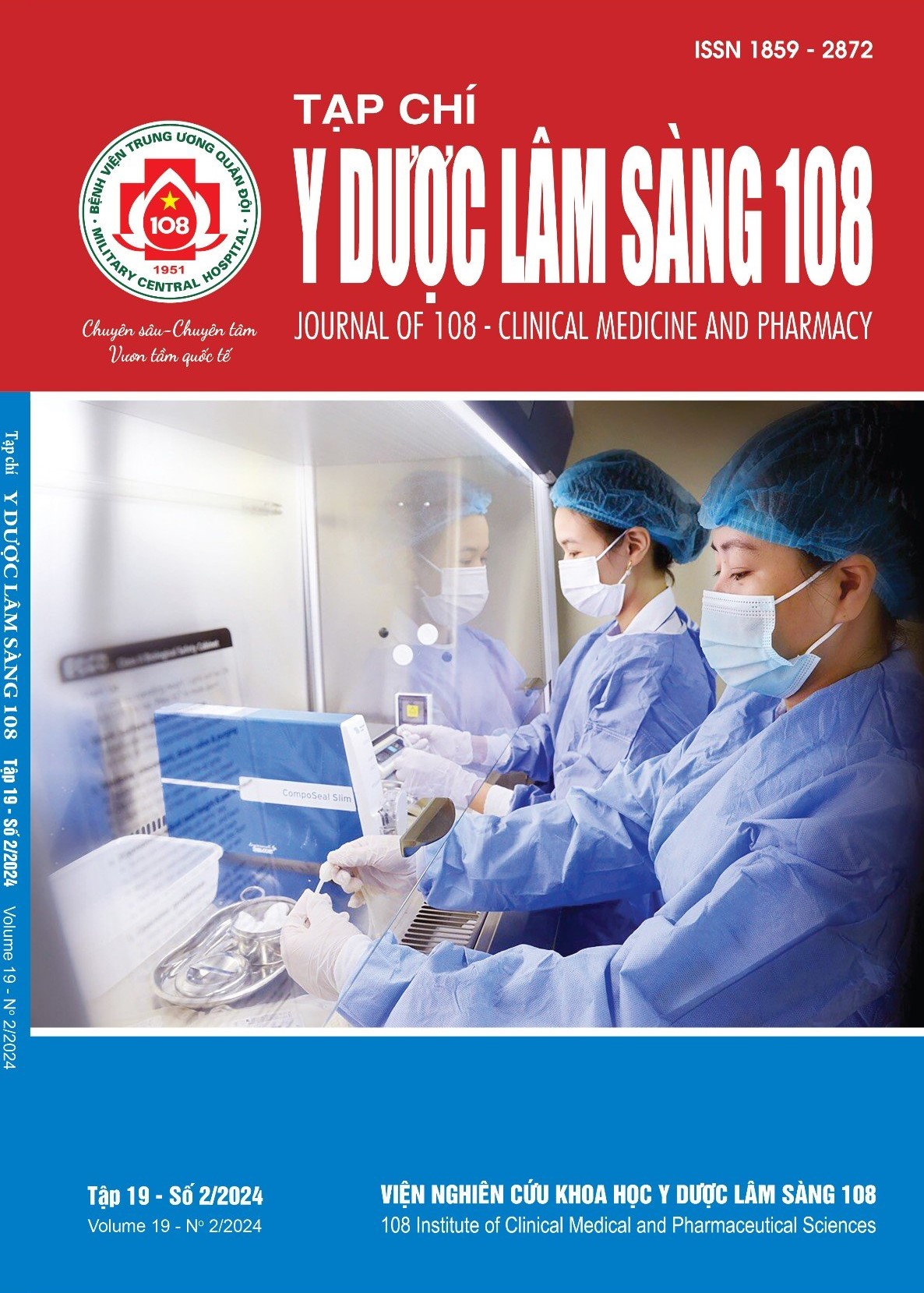The results of treatment of keloid scars with CO2 laser and intralesional botulinum toxin type A injection
Main Article Content
Keywords
Abstract
Objective: To evaluate the initial effectiveness of keloid scars treatment with CO2 laser and intralesional Botulinum toxin type A (Botox A) injection. Subject and method: Descriptive study of a clinical intervention uncontrolled group, comparison on 22 keloid patients treated with CO2 laser combined with intralesional botox A injection. Result: After 3 times of treatment with one month interval, the clinical changes in Vancouver Scar Scale (VSS) score were as follows: At the time of
non-injection (T0), pigment score: 2 ± 0, vascular score: 2.68 ± 0.477; hardness point: 3.05 ± 0.844; thickness score: 2.18 ± 0.501. At the end of the treatment course (T3), the corresponding results were 1.41 ± 0.854, 1.73 ± 6.13, 1.73 ± 0.613, 1.41 ± 0.80 (p<0.05). Overall results, at the time of not injection (T0) and after 3 months of treatment (T3) according to VSS were 9.91 ± 1.411 and 6.27 ± 2.292 (p<0.05), respectively. Most of the patients were satisfied (36.4%) and very satisfied (27.3%) when they were intervened by this method. Conclusion: Keloid scars treatment with CO2 laser and intralesional Botox A injection initially showed positive results, should be an efective solution for keloid treatment.
Article Details
References
2. Li J, Wu XY, Chen XD (2017) Observation on clinical efficacy of intralesional injection of glucocorticoid combined with Botulium toxin type A and its clinical application. Zhonghua Shao Shang Za Zhi Chin J Burns 33(4): 254-256.
3. Rasaii S, Sohrabian N, Gianfaloni S et al (2019) Intralestional triamcinolone alone or in combination with Botulium toxin A is ineffective for the treatment of formed keloid scar: A double blind controlled pilot study. Dermatol Ther 32(2): 12781.
4. Tawfik AA, Ali RA (2022) Evaluation of botulinum toxin type A for treating post burn hypertrophic scars and keloid in children: An intra-patient randomized controlled study. Journal of Cosmetic Dermatology 22(4): 1149-1432.
5. Kasyanju Carrero LM, Ma WW, Liu HF, Yin XF, Zhou BR (2018) Botulinum toxin type A for the treatment and prevention of hypertrophic scars and keloids: Updated review. Journal of Cosmetic Dermatology 18(1): 10-15.
6. Byun HJ, Park JH, Lee JH (2021) Combination treatment of intra/perilesional Botulinum Toxin-A injection and ablative fractional laser for better clinical outcomes of hypertrophic fibrotic thyroidectomy scars following fractional ablative laser resurfacing. Ann Dermatol 33(2): 170-177.
7. Sullivan T, Smith J, Kermode J, Mclver E & Courtemanche DJ (1990) Rating the burn scar. Journal of Burn Care & Rehabilitation 11(3): 256-260.
8. Khopkar U, Garg G & Sao P (2011) Effect of carbon dioxide laser ablation followed by intralesional steroids on keloids. Journal of Cutaneous and Aesthetic Surgery 4(1): 2.
9. Omi T, Numano K (2014) The role of the CO2 Laser and fractional CO2 Laser in dermatology. Laser Therapy 3(1): 49-60.
10. Joe Niamtu et al (2023) Comestic Facial Surgery, Chap 9, Third edition, Elsenvier Inc: 639.
11. Thornton NJ, Garcia BA, Hoyer P, Wilkerson MG (2021) Keloid Scars: An updated review of combination therapies. Cureus 13(1).
 ISSN: 1859 - 2872
ISSN: 1859 - 2872
